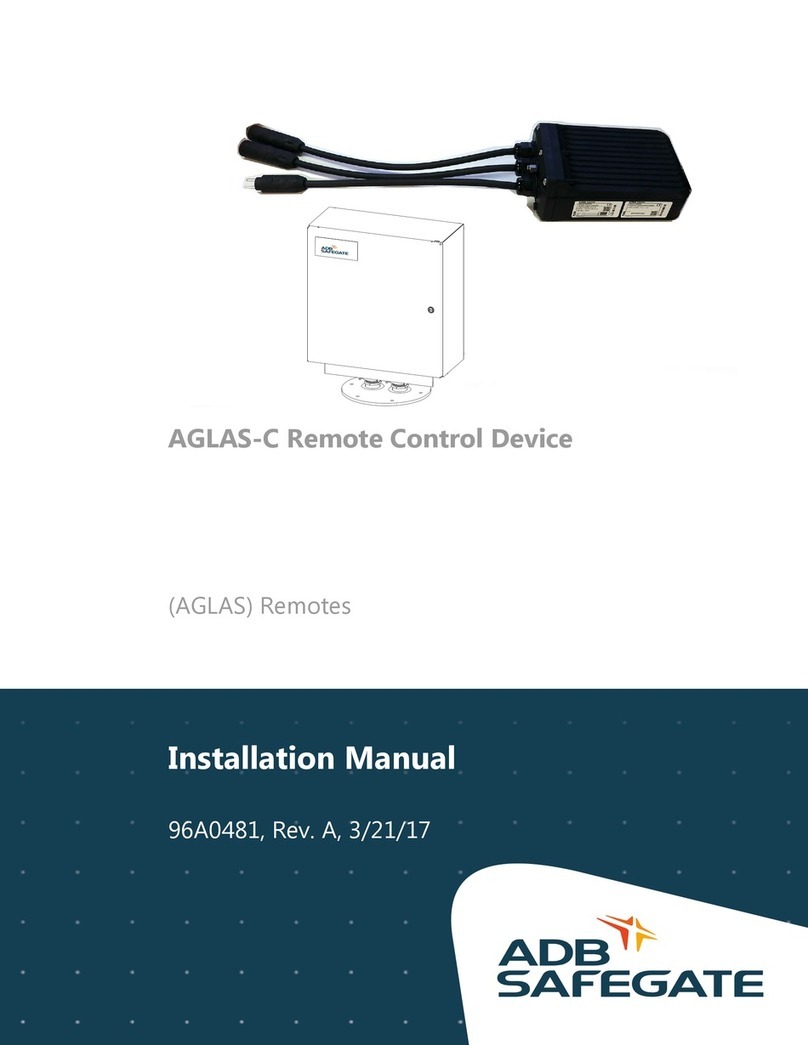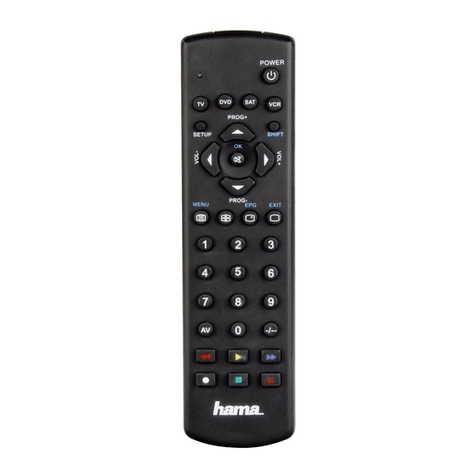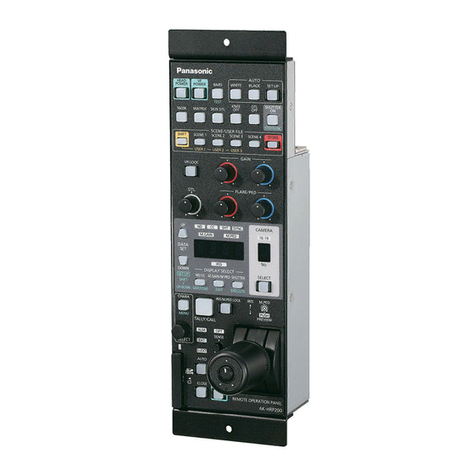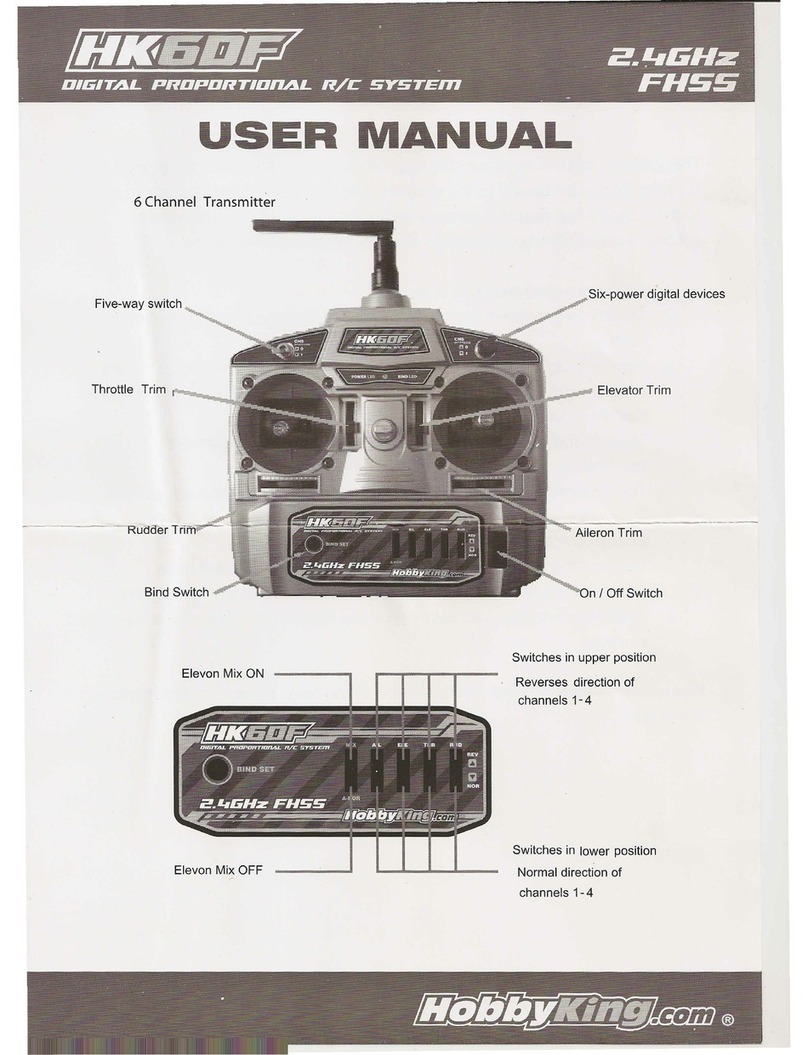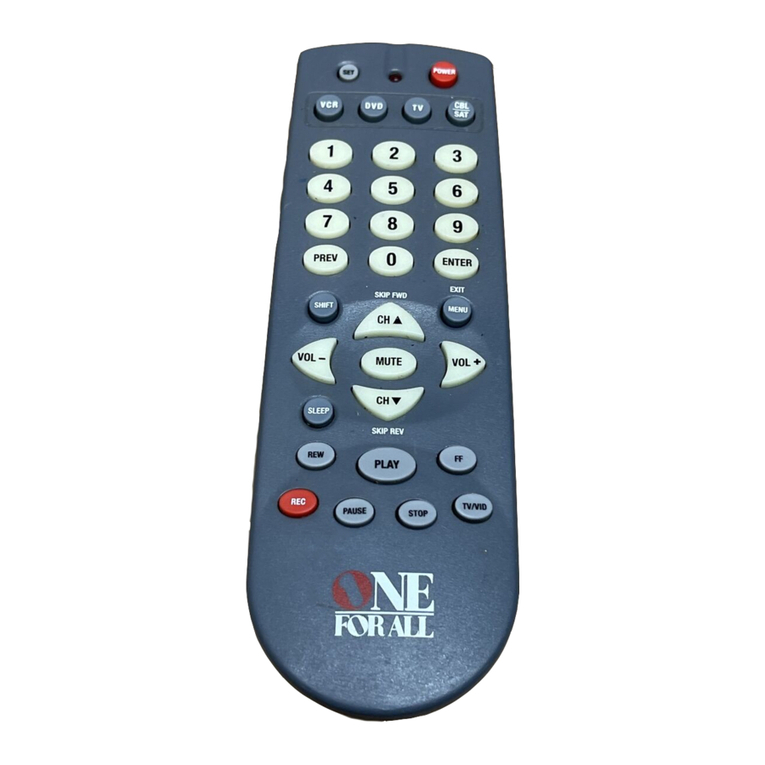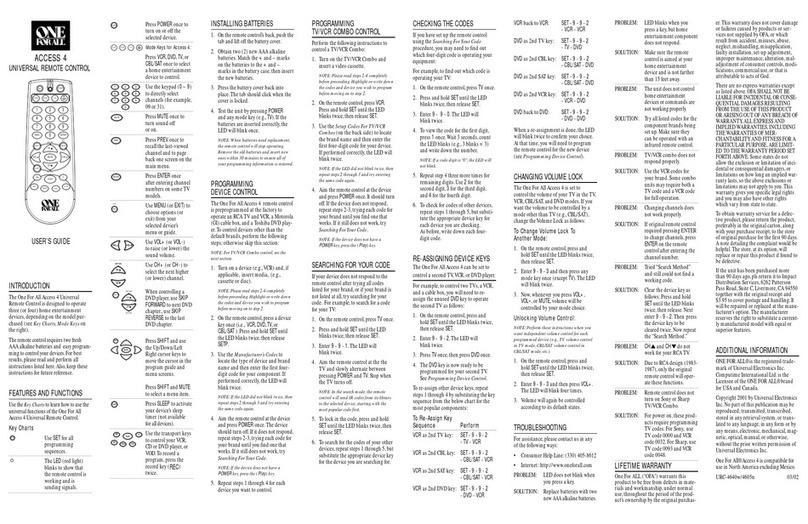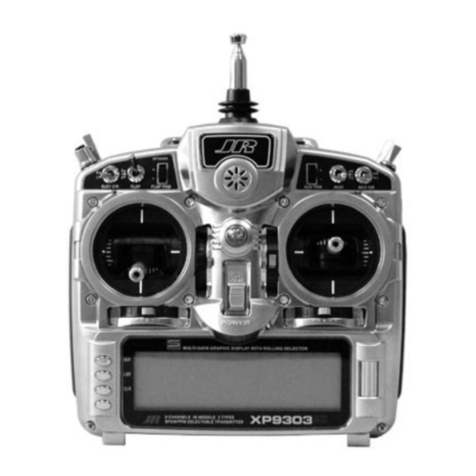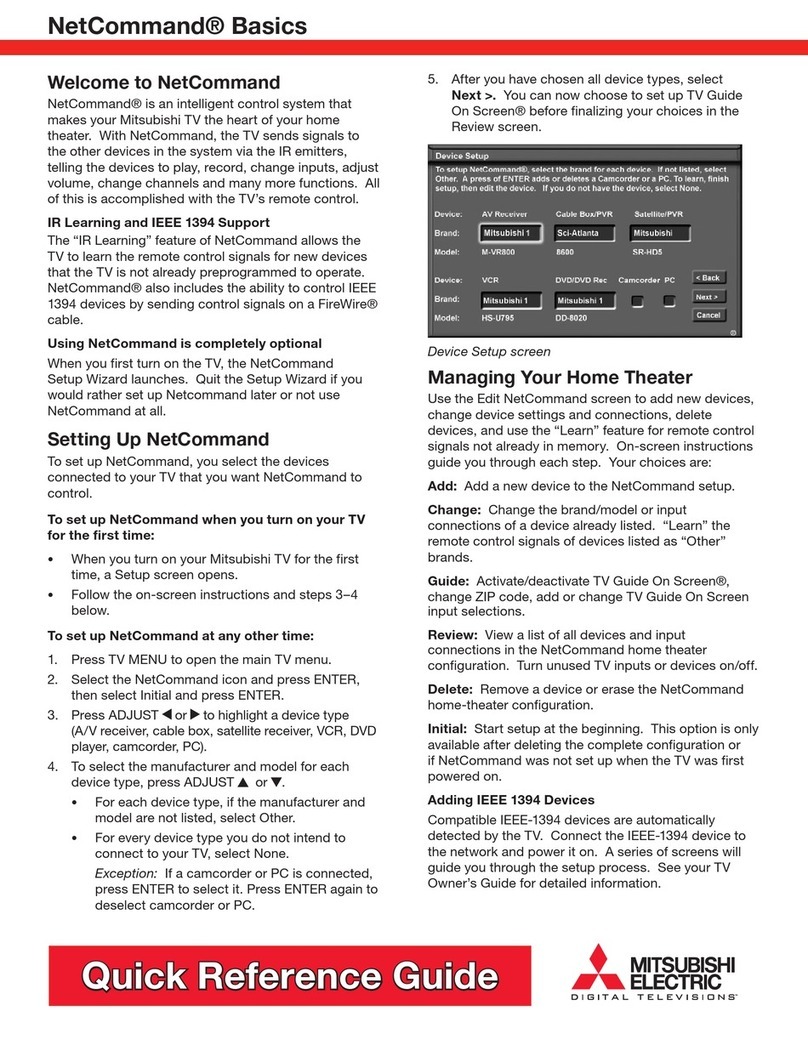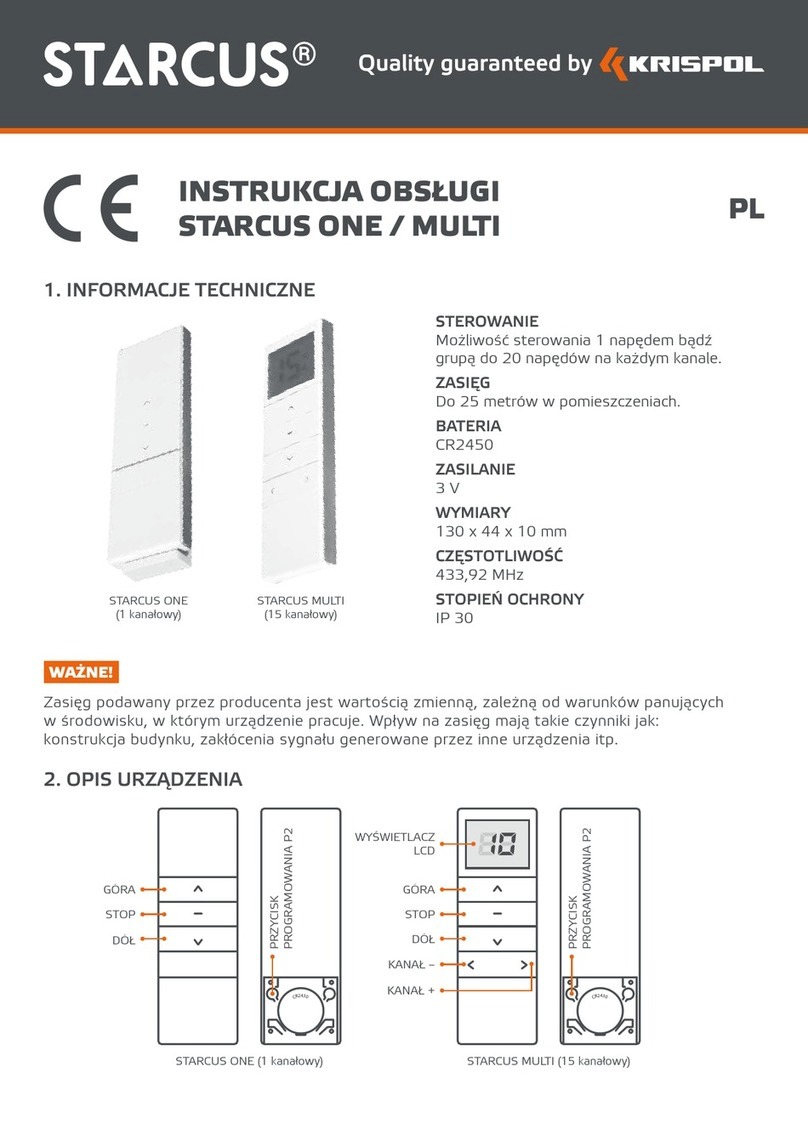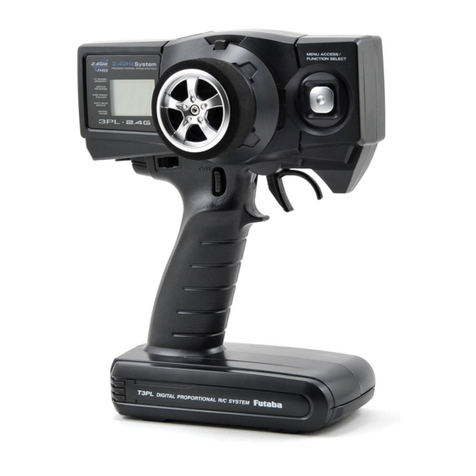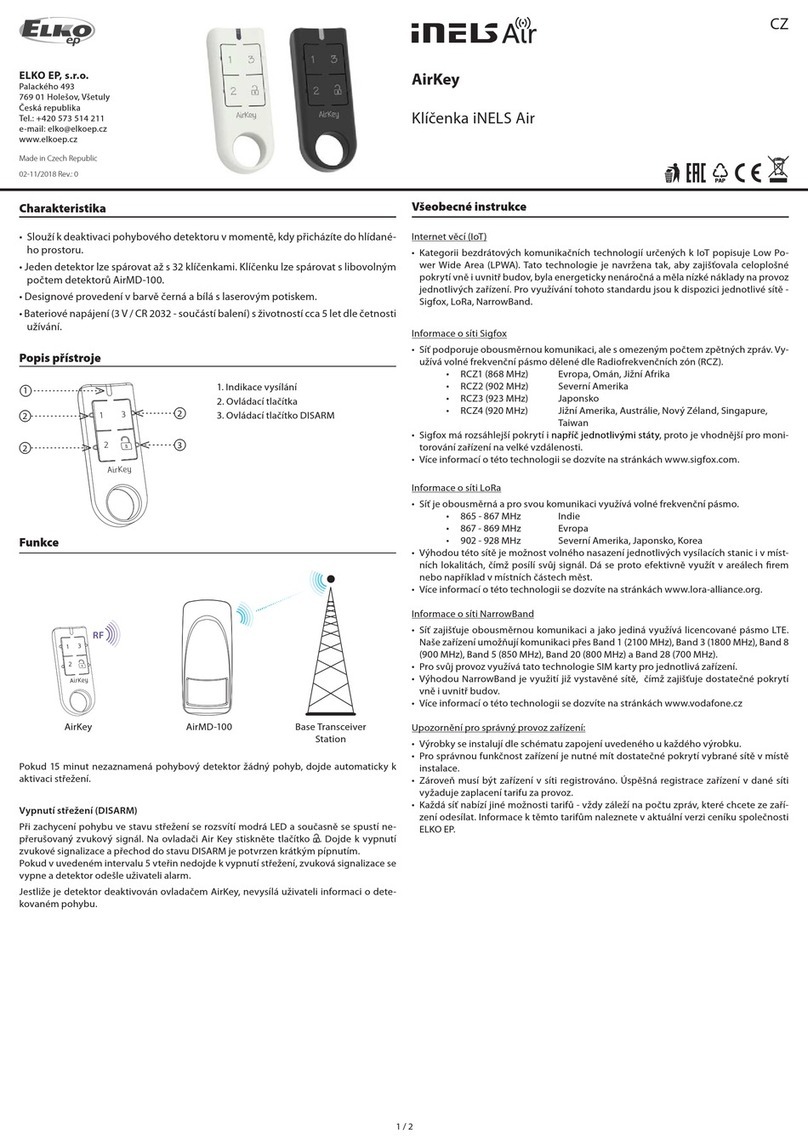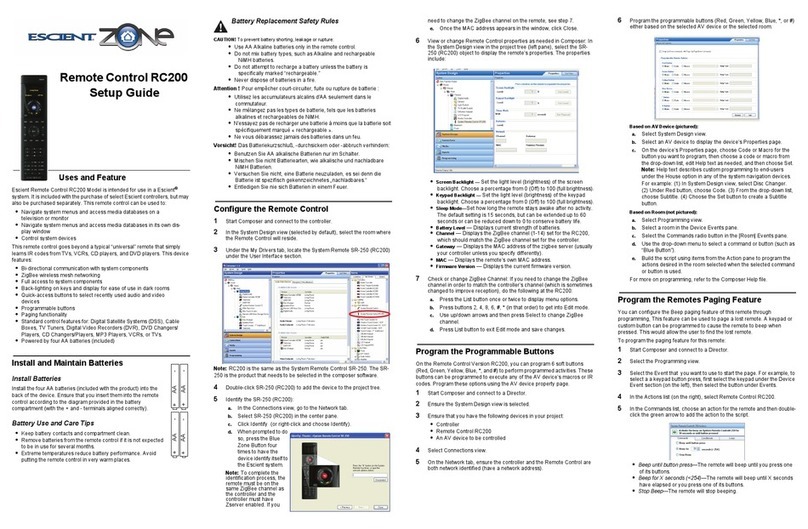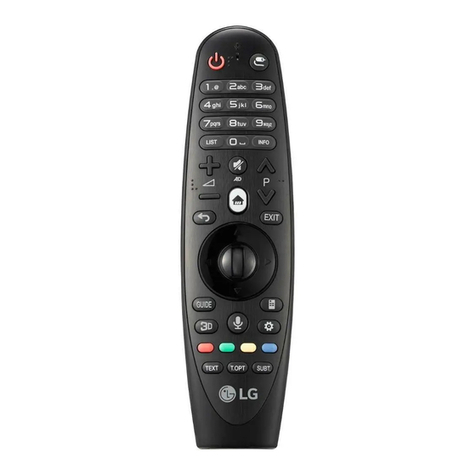ADB Safegate L-854 User manual

L-854 Radio Control Equipment
RCE, Type I, Style A
User Manual
96A0390, Rev. K, 2019/02/01


A.0 Disclaimer / Standard Warranty
CE certification
The equipment listed as CE certified means that the product complies with the essential requirements concerning safety and
hygiene. The directives that have been taken into consideration in the design are available on written request to ADB
SAFEGATE.
ETL certification
The equipment listed as ETL certified means that the product complies with the essential requirements concerning safety and
FAA Airfield regulations. The directives that have been taken into consideration in the design are available on written request
to ADB SAFEGATE.
LED Product Guarantee
Where applicable, per FAA EB67 (applicable edition), ADB SAFEGATE L858(L) Airfield Guidance Signs are warranted against
electrical defects in design or manufacture of the LED or LED specific circuitry for a period of 4 years. ADB SAFEGATE LED light
fixtures (with the exception of obstruction lighting) are warranted against mechanical and physical defects in design or
manufacture for a period of 12 months from date of installation; and are warranted against electrical defects in design or
manufacture of the LED or LED specific circuitry for a period of 4 years per FAA EB67 (applicable edition).
Note
See your sales order contract for a complete warranty description. In some specific cases, deviations are (to be)
accepted in the contract, which will supersede the standard warranty.
Standard Product Guarantee
Products of ADB SAFEGATE manufacture are guaranteed against mechanical, electrical, and physical defects (excluding lamps)
which may occur during proper and normal use for a period of one year from the date of installation or 2 years from date of
shipment and are guaranteed to be merchantable and fit for the ordinary purposes for which such products are made. ADB
SAFEGATE L858 Airfield Guidance Signs are warranted against mechanical and physical defects in design or manufacture for a
period of 2 years from date of installation per FAA AC 150/5345-44 (applicable edition).
Note
See your sales order contract for a complete warranty description.
All Products Guarantee
LED Products of ADB SAFEGATE, manufactured and sold by ADB SAFEGATE or its licensed representatives, meets the
corresponding requirements of FAA, ICAO and IEC.
ADB SAFEGATE will correct by repair or replacement per the applicable guarantee above, at its option, equipment or parts
which fail because of mechanical, electrical or physical defects, provided that the goods have been properly handled and
stored prior to installation, properly installed and properly operated after installation, and provided further that Buyer gives
ADB SAFEGATE written notice of such defects after delivery of the goods to Buyer. Refer to the Safety section for more
information on Material Handling Precautions and Storage precautions that must be followed.
ADB SAFEGATE reserves the right to examine goods upon which a claim is made. Said goods must be presented in the same
condition as when the defect therein was discovered. ADB SAFEGATE furthers reserves the right to require the return of such
goods to establish any claim.
ADB SAFEGATE’s obligation under this guarantee is limited to making repair or replacement within a reasonable time after
receipt of such written notice and does not include any other costs such as the cost of removal of defective part, installation
of repaired product, labor or consequential damages of any kind, the exclusive remedy being to require such new parts to be
furnished.
96A0390, Rev. K, 2019/02/01 iii
Copyright © ADB Safegate, All Rights Reserved

ADB SAFEGATE’s liability under no circumstances will exceed the contract price of goods claimed to be defective. Any returns
under this guarantee are to be on a transportation charges prepaid basis. For products not manufactured by, but sold by ADB
SAFEGATE, warranty is limited to that extended by the original manufacturer.
This is ADB SAFEGATE’s sole guarantee and warranty with respect to the goods; there are no express warranties or warranties
of fitness for any particular purpose or any implied warranties of fitness for any particular purpose or any implied warranties
other than those made expressly herein. All such warranties being expressly disclaimed.
Liability
WARNING
Use of the equipment in ways other than described in the catalogue leaflet and the manual may result in personal
injury, death, or property and equipment damage. Use this equipment only as described in the manual.
ADB SAFEGATE cannot be held responsible for injuries or damages resulting from non-standard, unintended uses of its
equipment. The equipment is designed and intended only for the purpose described in the manual. Uses not described in the
manual are considered unintended uses and may result in serious personal injury, death or property damage.
Unintended uses includes the following actions:
•Making changes to equipment that have not been recommended or described in this manual or using parts that are not
genuine ADB SAFEGATE replacement parts or accessories.
•Failing to make sure that auxiliary equipment complies with approval agency requirements, local codes, and all applicable
safety standards if not in contradiction with the general rules.
•Using materials or auxiliary equipment that are inappropriate or incompatible with your ADB SAFEGATE equipment.
•Allowing unskilled personnel to perform any task on or with the equipment.
© ADB SAFEGATE BVBA
This manual or parts thereof may not be reproduced, stored in a retrieval system, or transmitted, in any form or by any means,
electronic, mechanical, photocopying, recording, nor otherwise, without ADB SAFEGATE BVBA’s prior written consent.
This manual could contain technical inaccuracies or typographical errors. ADB SAFEGATE BVBA reserves the right to revise this
manual from time to time in the contents thereof without obligation of ADB SAFEGATE BVBA to notify any person of such
revision or change. Details and values given in this manual are average values and have been compiled with care. They are not
binding, however, and ADB SAFEGATE BVBA disclaims any liability for damages or detriments suffered as a result of reliance
on the information given herein or the use of products, processes or equipment to which this manual refers. No warranty is
made that the use of the information or of the products, processes or equipment to which this manual refers will not infringe
any third party’s patents or rights. The information given does not release the buyer from making their own experiments and
tests
L-854 Radio Control Equipment
iv
Copyright © ADB Safegate, All Rights Reserved

TABLE OF CONTENTS
1.0 Safety.........................................................................................................................................................................................1
1.1 Safety Messages.......................................................................................................................................................................................................... 1
1.1.1 Introduction to Safety...................................................................................................................................................................................2
1.1.2 Intended Use.................................................................................................................................................................................................... 2
1.1.3 Material Handling Precautions: Storage................................................................................................................................................ 3
1.1.4 Operation Safety.............................................................................................................................................................................................3
1.1.5 Maintenance Safety....................................................................................................................................................................................... 3
1.1.6 Material Handling Precautions, ESD........................................................................................................................................................4
2.0 L-854 Radio Control Equipment.............................................................................................................................................5
2.1 About this manual.......................................................................................................................................................................................................5
2.1.1 How to work with the manual................................................................................................................................................................... 5
2.2 Introduction...................................................................................................................................................................................................................5
2.3 Digital Radio Control..................................................................................................................................................................................................6
2.3.1 FCC Part 15 Notice......................................................................................................................................................................................... 8
3.0 Options......................................................................................................................................................................................9
3.1 Equipment Specification Data................................................................................................................................................................................9
3.2 Radio Control Restrictions....................................................................................................................................................................................... 9
3.3 Interfacing the Radio Controller..........................................................................................................................................................................10
3.4 Intensity Control........................................................................................................................................................................................................10
4.0 Theory of Operation.............................................................................................................................................................. 13
4.1 General..........................................................................................................................................................................................................................13
4.2 Terminal Block............................................................................................................................................................................................................ 13
4.3 Control Board............................................................................................................................................................................................................. 14
4.4 Power Supply Board.................................................................................................................................................................................................15
4.5 Relay Board..................................................................................................................................................................................................................16
5.0 Installation..............................................................................................................................................................................19
5.1 Unpacking....................................................................................................................................................................................................................19
5.2 Installing L-854 Radio Control Equipment......................................................................................................................................................19
5.2.1 Remote Antenna (Option).........................................................................................................................................................................21
5.2.2 Safety Precautions........................................................................................................................................................................................22
5.2.3 Mounting Remote Antenna......................................................................................................................................................................22
6.0 Operation................................................................................................................................................................................23
6.1 Controls and Indicators.......................................................................................................................................................................................... 23
6.2 Startup Procedures...................................................................................................................................................................................................24
7.0 Maintenance........................................................................................................................................................................... 27
7.1 Introduction.................................................................................................................................................................................................................27
7.2 Receiver Frequency Setting...................................................................................................................................................................................27
8.0 Troubleshooting.....................................................................................................................................................................29
8.1 Wiring Schematics....................................................................................................................................................................................................30
8.1.1 Introduction....................................................................................................................................................................................................30
8.1.2 Wiring Diagram List.....................................................................................................................................................................................30
9.0 Parts.........................................................................................................................................................................................37
9.1 Spare Parts...................................................................................................................................................................................................................37
A.0 SUPPORT.... 39
A.1 ADB SAFEGATE website..........................................................................................................................................................................................39
A.2 Recycling......................................................................................................................................................................................................................40
A.2.1 Local authority recycling...........................................................................................................................................................................40
A.2.2 ADB SAFEGATE recycling.......................................................................................................................................................................... 40
96A0390, Rev. K, 2019/02/01 v
Copyright © ADB Safegate, All Rights Reserved

L-854 Radio Control Equipment
TABLE OF CONTENTS
vi
Copyright © ADB Safegate, All Rights Reserved

1.0 Safety
Introduction to Safety
This section contains general safety instructions for installing and using ADB SAFEGATE equipment. Some safety instructions
may not apply to the equipment in this manual. Task- and equipment-specific warnings are included in other sections of this
manual where appropriate.
1.1 Safety Messages
HAZARD Icons used in the manual
For all HAZARD symbols in use, see the Safety section. All symbols must comply with ISO and ANSI standards.
Carefully read and observe all safety instructions in this manual, which alert you to safety hazards and conditions that may
result in personal injury, death or property and equipment damage and are accompanied by the symbol shown below.
WARNING
Failure to observe a warning may result in personal injury, death or equipment damage.
Danger - Risk of electrical shock or ARC FLASH
Disconnect equipment from line voltage. Failure to observe this warning may result in personal injury, death, or
equipment damage. ARC Flash may cause blindness, severe burns or death.
WARNING - Wear personal protective equipment
Failure to observe may result in serious injury.
WARNING - Do not touch
Failure to observe this warning may result in personal injury, death, or equipment damage.
CAUTION
Failure to observe a caution may result in equipment damage.
Qualified Personnel
Important Information
The term qualified personnel is defined here as individuals who thoroughly understand the equipment and its safe
operation, maintenance and repair. Qualified personnel are physically capable of performing the required tasks, familiar
with all relevant safety rules and regulations and have been trained to safely install, operate, maintain and repair the
equipment. It is the responsibility of the company operating this equipment to ensure that its personnel meet these
requirements.
Always use required personal protective equipment (PPE) and follow safe electrical work practice.
96A0390, Rev. K, 2019/02/01 1
Copyright © ADB Safegate, All Rights Reserved

1.1.1 Introduction to Safety
CAUTION
Unsafe Equipment Use
This equipment may contain electrostatic devices, hazardous voltages and sharp edges on components
• Read installation instructions in their entirety before starting installation.
• Become familiar with the general safety instructions in this section of the manual before installing,
operating, maintaining or repairing this equipment.
• Read and carefully follow the instructions throughout this manual for performing specific tasks and
working with specific equipment.
• Make this manual available to personnel installing, operating, maintaining or repairing this
equipment.
• Follow all applicable safety procedures required by your company, industry standards and
government or other regulatory agencies.
• Install all electrical connections to local code.
• Use only electrical wire of sufficient gauge and insulation to handle the rated current demand. All
wiring must meet local codes.
• Route electrical wiring along a protected path. Make sure they will not be damaged by moving
equipment.
• Protect components from damage, wear, and harsh environment conditions.
• Allow ample room for maintenance, panel accessibility, and cover removal.
• Protect equipment with safety devices as specified by applicable safety regulations
• If safety devices must be removed for installation, install them immediately after the work is
completed and check them for proper functioning prior to returning power to the circuit.
Failure to follow this instruction can result in serious injury or equipment damage
Additional Reference Materials
Important Information
•IEC - International Standards and Conformity Assessment for all electrical, electronic and related technologies.
•IEC 60364 - Electrical Installations in Buildings.
•FAA Advisory: AC 150/5340-26 (current edition), chapter 45, section 4, Maintenance of Airport Visual Aid Facilities.
•Maintenance personnel must refer to the maintenance procedure described in the ICAO Airport Services Manual,
Part 9.
•ANSI/NFPA 79, Electrical Standards for Metalworking Machine Tools.
•National and local electrical codes and standards.
1.1.2 Intended Use
CAUTION
Use this equipment as intended by the manufacturer
This equipment is designed to perform a specific function, do not use this equipment for other purposes
• Using this equipment in ways other than described in this manual may result in personal injury, death
or property and equipment damage. Use this equipment only as described in this manual.
Failure to follow this instruction can result in serious injury or equipment damage
L-854 Radio Control Equipment
Safety
2
Copyright © ADB Safegate, All Rights Reserved

1.1.3 Material Handling Precautions: Storage
CAUTION
Improper Storage
Store this equipment properly
• If equipment is to be stored prior to installation, it must be protected from the weather and kept free
of condensation and dust.
Failure to follow this instruction can result in equipment damage
1.1.4 Operation Safety
CAUTION
Improper Operation
Do Not Operate this equipment other than as specified by the manufacturer
• Only qualified personnel, physically capable of operating the equipment and with no impairments in
their judgment or reaction times, should operate this equipment.
• Read all system component manuals before operating this equipment. A thorough understanding of
system components and their operation will help you operate the system safely and efficiently.
• Before starting this equipment, check all safety interlocks, fire-detection systems, and protective
devices such as panels and covers. Make sure all devices are fully functional. Do not operate the
system if these devices are not working properly. Do not deactivate or bypass automatic safety
interlocks or locked-out electrical disconnects or pneumatic valves.
• Protect equipment with safety devices as specified by applicable safety regulations.
• If safety devices must be removed for installation, install them immediately after the work is
completed and check them for proper functioning.
• Route electrical wiring along a protected path. Make sure they will not be damaged by moving
equipment.
• Never operate equipment with a known malfunction.
• Do not attempt to operate or service electrical equipment if standing water is present.
• Use this equipment only in the environments for which it is rated. Do not operate this equipment in
humid, flammable, or explosive environments unless it has been rated for safe operation in these
environments.
• Never touch exposed electrical connections on equipment while the power is ON.
Failure to follow these instructions can result in equipment damage
1.1.5 Maintenance Safety
DANGER
Electric Shock Hazard
This equipment may contain electrostatic devices
• Do not operate a system that contains malfunctioning components. If a component malfunctions,
turn the system OFF immediately.
• Disconnect and lock out electrical power.
• Allow only qualified personnel to make repairs. Repair or replace the malfunctioning component
according to instructions provided in its manual.
Failure to follow these instructions can result in death or equipment damage
96A0390, Rev. K, 2019/02/01 3
Copyright © ADB Safegate, All Rights Reserved

1.1.6 Material Handling Precautions, ESD
CAUTION
Electrostatic Sensitive Devices
This equipment may contain electrostatic devices
• Protect from electrostatic discharge.
• Electronic modules and components should be touched only when this is unavoidable e.g. soldering,
replacement.
• Before touching any component of the cabinet you shall bring your body to the same potential as the
cabinet by touching a conductive earthed part of the cabinet.
• Electronic modules or components must not be brought in contact with highly insulating materials
such as plastic sheets, synthetic fiber clothing. They must be laid down on conductive surfaces.
• The tip of the soldering iron must be grounded.
• Electronic modules and components must be stored and transported in conductive packing.
Failure to follow this instruction can result in equipment damage
L-854 Radio Control Equipment
Safety
4
Copyright © ADB Safegate, All Rights Reserved

2.0 L-854 Radio Control Equipment
Type I, Style A.
L -854 RCE Digital Radio Control, Air-to-ground (Type I) radio control
The ETL-Certified RCE provides unattended, all-weather, air-to-ground radio control of airport lighting systems. Simple to
install, the radio controller allows the frequency -- from 118.0 to 136.0MHz VHF -- to be programmed by the user. The
controller is also flexible with an input power of 120 or 240V AC, ±10 percent, 50/60Hz or 12-48V DC, ±20 percent, and two
independent sets of output relays that can be programmed for either individual or incremental operation. The controller also
has a built-in speaker with volume control and a whip or remote antenna. For Canadian applications, the L-854 is configurable
as a Type J or Type K ARCAL unit via DIP switch selection.
2.1 About this manual
The manual shows the information necessary to:
•Program and Configure L-854 Radio Control Equipment.
2.1.1 How to work with the manual
1. Become familiar with the structure and content.
2. Carry out the actions completely and in the given sequence.
2.2 Introduction
L-854 Radio Control Equipment
See Figure 1 L-854 Radio Control Equipment.
96A0390, Rev. K, 2019/02/01 5
Copyright © ADB Safegate, All Rights Reserved

This section describes the L-854 Type I Radio Control system.
Figure 1: L-854 Radio Control Equipment
The L-854 Type I Radio Control system is used for air-to-ground control of airport lighting facilities. This equipment is
manufactured to FAA specification AC 150/5345-49.
The L-854 Radio Control, consisting of an AM receiver and a Style A decoder, is a completely self-contained system for
controlling lighting functions on an airport from a remote radio transmitter. The transmitter is usually the communications
transmitter in an aircraft.
The Radio Control has two sets of three output relays operated by keying the transmitter in specific sequences. Either set of
relays can operates in either a cumulative fashion, or in single output mode, where only one relay in the set is on at a time. To
power these relays, pilots can set their communications transmitters to the frequency to which the L-854 is tuned.
Three clicks of the mike button within five seconds powers the lighting system on the low (10) brightness setting. Five clicks of
the mike button within five seconds powers the lighting system on the medium (30) brightness setting. Seven clicks of the
mike button within five seconds powers the lighting system on the high (100) brightness setting. The L-854 Radio Control can
be field programmed for three, five, and seven clicks to change the light settings.
The contacts of the relays in the L-854 are for control purposes only. They are rated 3 amps (inductive) and are capable of
operating the coils or power relays. They are not intended to switch lighting-load currents.
2.3 Digital Radio Control
Compliance with Standards
FAA: L-854 AC 150/5345-49 (Current Edition). ETL Certified.
ICAO: Aerodrome Design Manual, Part 5 para. 3.4.6.
FCC: 47 CFR, Part 15:2007 (Class A).
T/C: Transport Canada TP 312 - Aerodromes Standards and Recommended Practices.
Uses
FAA L-854, ICAO, FCC & TP 312 Provides air-to-ground (Type I) radio control of airport lighting systems.
Features
•Unattended all-weather operation
•Simple installation, low cost
•Input power – 120 or 240 VAC, ±10%, 50/60 Hz or 12 or 48 VDC, ±20%
•Output – 3 A relay contact rating, optional 40 A rating available
L-854 Radio Control Equipment
L-854 Radio Control Equipment
6
Copyright © ADB Safegate, All Rights Reserved

•Operating temperature: -67 °F to +131 °F (-55 °C to +55 °C)
•Frequency – 118.0 to 136.0 MHz VHF. Digital control electronics allow operating frequency to be easily reprogrammed by
the user. This eliminates the need — required by older analog units — to return the L-854 to the factory for operating
frequency changes.
•Antenna – whip (standard) or remote
•Built-in speaker with volume control
•Optional Remote Maintenance Module (RMM) available to interface to FAA equipment
•For Canadian applications, the L-854 is configurable as a Type J or Type K ARCAL unit via DIP switch selection
Application
The primary function of the L-854 Radio Controller is to allow maximum utilization of airport runway lighting systems during
times when the airport is unattended.
Runway or approach lighting systems may be activated and intensity controlled remotely by using the L-854 Radio Controller.
This is accomplished by the simple process of keying the microphone button of the regular VHF communication transmitter in
the approaching aircraft. No special airborne equipment or adapters are required. Two independent sets of output relays can
be programmed for either individual or incremental operation.
The lights are activated remotely from the air and remain on for a period of 15 minutes and turn off automatically thereafter.
Additional timer settings of 1, 30, 45 and 60 minutes are available. Selectable re-command enable/disable prevents setting
outputs to a different state until the L-854 has timed out.
Selectable decoder enable/disable prevents multiple relay operation during the daytime when ATC normally controls the
lights.
Runway edge lighting, MALSR, or REILs are prime candidates for radio control operation.
In Canada, ARCAL systems are generally available in two forms. Type J allows connected systems to be activated at a single
intensity. Type K allows three selections of connected systems and are generally used to scale the light intensity selection on
connected high and medium intensity lights.
Operating Conditions
Temperature: -67 °F to +131 °F (-55 °C to +55 °C)
Humidity: 0 to 100%
Altitude: 0 to 6,600 ft (2,000 m)
Electrical
The Receiver is a single-conversion super-heterodyne design operating at a nominal radio frequency within the VHF band 118
to 136 MHz. The sensitivity is adjustable from 1 to 30 microvolts as desired by the user, permitting a control range of 1 to 20
miles. The receiver may be programmed to operate on any frequency in the specified VHF range. The Unicom channel, 122.8
MHz, is a frequent choice. Decoding is accomplished by solid-state digital circuitry, which is designed to sense the presence
of three, five, or seven pulses within a five-second time period. The digital circuitry determines if any of these conditions exist
and affect proper output relay closures. The L-854 Radio Control Equipment complies with FCC Part 15 rules and regulations.
Input Power Requirements
Voltage Maximum VA
12 VDC 11 1
48 VDC 13
120 VAC 15 2
240 VAC 18 2
Notes
96A0390, Rev. K, 2019/02/01 7
Copyright © ADB Safegate, All Rights Reserved

Voltage Maximum VA
1Typical standby power is 4 VA at 12 VDC for calculating solar power autonomy
2The optional 40 A relay will add 10 VA when energized
Theory of Operation
The system is activated upon receiving a series of pulses of radio frequency energy within a five-second period.
There are two independent sets of relays that can be programmed for individual or incremental operation. In incremental
operation at the third pulse, the first relay closes, at the fifth pulse, the second relay closes, at the seventh pulse, the third
relay closes. In individual operation only the relay for the selected step is closed at any time.
At any time in the sequence, the pilot has the option of sending three, five, or seven pulses to command the system to the
desired intensity level. The system will remain at the intensity level of the last command received. The solid-state timer will
continue to operate for 15-60 minutes (selectable) after which it will cause the system to revert to the original “off” condition.
The timer is reset by the receipt of any command at any time, unless re-command is set to disable, which requires the L-854
controller to time out before a new command is accepted.
In the event of a power interruption while the relays are energized, the controller and associated relays will resume operation
for the remainder of the period at the previously selected brightness setting.
An ideal application for series constant-current lighting systems is that of operating at a low power setting, using the L-854
controller to bring the lighting to full brilliancy, and if desired, simultaneously energizing the REILs. Maximum life and utility
are thus achieved for both systems. Runway lighting and REIL/xenon flash lamp life is greatly increased. Since the L-854
controller is designed for outdoor, unattended, and continuous operation, it eliminates costly trenching and installation of
control lines to remote facilities.
Packaging
Weight: 21 lb (9.5 kg)
Size: 12 × 10 × 8 in
(30.48 × 25.4 × 20.32 cm)
2.3.1 FCC Part 15 Notice
This device complies with Part 15 of the FCC Rules. Operation is subject to the following two conditions:
1. This device may not cause harmful interference, and
2. This device must accept any interference received, including interference that may cause undesired operation.
L-854 Radio Control Equipment
L-854 Radio Control Equipment
8
Copyright © ADB Safegate, All Rights Reserved

3.0 Options
Options are available for the L-854 Radio Control Equipment: radio controller power handling capability and operation as a
Canadian Mode J controller.
Radio Controller Power Handling Capability
An optional 40 amp relay (53A0432) is available, for the operation of airfield lighting or other devices in a single step
configuration.
Canada Mode J and K Operation
The Radio Control system will operate in Canada as a Mode K controller with no additional modification. It will also operate as
a Mode J controller by placing switch position 3 of SW1 on the Relay Board into the ON position. Reference Table 8. This will
allow a single intensity level to be set with five clicks.
3.1 Equipment Specification Data
Table 1 lists supplied equipment and accessories.
Table 1: Supplied Equipment
Quantity Description
1 L-854 Radio Control Equipment
1 Remote Antenna Kit (includes antenna, and coaxial cable) (Option)
1 Instruction Manual 96A0390
Table 2 lists items not supplied that might be required for installation.
Table 2: Required Equipment Not Supplied
Quantity Description Part Number
A/R grounding rods commercial
A/R silicone rubber Dow-Corning Silastic Rubber
or G.E. Silicone Seal
1antenna mast
(Used with Remote Antenna option) commercial
A/R antenna mounting hardware
(Used with Remote Antenna option) commercial
1Lightning Arrestor
(Used with Remote Antenna option) commercial
1 circuit breaker (size per installation plans) commercial
41/4 x 1 in. long lag screws (for mounting
enclosure) commercial
41/4 in. flat washer for (1/4 x 1 in. long lag
screws) commercial
1 ground strap commercial
3.2 Radio Control Restrictions
Use air-to-ground Radio Control at uncontrolled airports or at controlled airports during periods when the Air Traffic Control
tower is closed. Except for obstruction lights and the airport beacon, all other lighting systems on the airport may be
operated by air-to-ground Radio Control.
96A0390, Rev. K, 2019/02/01 9
Copyright © ADB Safegate, All Rights Reserved

3.3 Interfacing the Radio Controller
You can directly connect the Radio Controller to the control interface of the airfield lighting power regulators, to an L-890
ALCMS system, or use a relay interface panel to provide additional switching capabilities or reduce the load on the Radio
Controller. Configure the Radio Control system so the runway lights are on whenever the other lighting systems serving the
runway are on, except during daytime operations.
Configure the Radio Control system with a day mode to power only those lighting systems that are useful during the day. This
mode can be selected automatically by means of a photocell or by a manual switch. Using the day mode, however, means
that the daytime IFR procedures associated with the deactivated lighting systems cannot be used.
In areas with heavy voice traffic on the Radio Controller frequency, there may be nuisance activation due to random
microphone clicks. The Decoder Disable can be wired through the terminal block to an external switch, relay or external
photocell. Placing a jumper or closed switch between terminals 1 and 3 of the terminal block will disable the decoder. See
Table 4.
When the air-to-ground Radio Control is used at night, the lighting system may not be powered for long periods of time. The
default setting for the controller is the recommended FAA time of 15 minutes. Other times of 30, 45 or 60 minutes can be
selected from the front panel.
3.4 Intensity Control
Table 3 provides guidance on how to interface the Radio Control with the intensity settings of the airport lighting system. For
example, connect a lighting system with five intensity settings so three clicks of the microphone would power brightness
setting 1 or 2, five clicks would power setting 3, and seven clicks would power setting 5. The airport authority may select
either setting 1 or 2 for the lowest brightness setting, depending on the background lighting at the airport.
Table 3: Interface of Radio Control with Airport Visual Aids
Lighting System Number of Intensity
Steps
Status During Idle
Periods
Intensity Setting Selected per Number of
Microphone Clicks
3 clicks 5 clicks 7 clicks
Approach Lights
2
3
5
Off
Off
Off
Low
Low
1 or 2
Low
Medium
3
High
High
5
Edge Lights: Low
Intensity Med.
Intensity
High Intensity
1
3
5
Off
Off or Low
Off or Low
On
Low
1 or 2
On
Medium
3
On
High
5
Taxiway Edge Lights
1
2
3
Off
Off
Off
On
Low
Low
On
Low
Medium
On
High
High
Runway Centerline
Touchdown Zone
Lights
5 Off 1 or 2 3 5
Taxiway Centerline
Lights
3
5
Off
Off
Low
1 or 2
Medium
3
High
5
REILS
1
2
3
Off
Off
Off
Off
Off
Low
Off
Low
Medium
On
High
High
Visual Glideslope
Systems
3
5
Off
Off
On
Low
On
Medium
On
High
Notes
1If the runway lights are left on during idle periods, other lighting systems may also be left on at a pre-selected brightness.
L-854 Radio Control Equipment
Options
10
Copyright © ADB Safegate, All Rights Reserved

L-854 Radio Control Equipment
Options
12
Copyright © ADB Safegate, All Rights Reserved

4.0 Theory of Operation
This subsection describes the L-854 Radio Control Equipment theory of operation. Refer to Figure 2.
4.1 General
The L-854 has three major components: the Radio Control Board (44A6748), the Radio Display Board (44A6746), the Radio
Power Supply Board (44A6749), and the Radio Relay Board (44A6747).
Figure 2: L-854 Main Assembly
4.2 Terminal Block
See Table 4. The L-854 Radio Control Equipment terminal block is used to interface an air-to- ground Radio Control
Equipment with an L-821 control panel, interface panel or direct to an L- 828 constant current regulator (CCR). The CCR
control voltage can be either +48 V dc or 120 Vac.
Table 4: Terminal Strip Interface
TERMINAL STRIP # DESCRIPTION
1I/O Common
2General I/O (not used)
3Command Decode Disable (see Interfacing the Radio Controller)
4ACom – voltage common input for A relays
5A7clk – Output of A7 (7-click) Relay
6 A5clk – Output of A5 (5-click) Relay
7 A3clk – Output of A3 (3-click) Relay
96A0390, Rev. K, 2019/02/01 13
Copyright © ADB Safegate, All Rights Reserved

Table 4: Terminal Strip Interface (continued)
TERMINAL STRIP # DESCRIPTION
8 B3clk – Output of B3 (3-click) Relay
9 B5clk – Output of B5 (5-click) Relay
10 B7clk – Output of B7 (7-click) Relay
11 BCom – voltage common input for B relays
12 240 or 115V AC Neutral -12 or -48 VDC (Neg)
13 240 or 115V AC Load +12 or +48 VDC (Pos)
14
(Green/Yellow)
240 or 115V AC Ground (Green)
Cabinet Ground
4.3 Control Board
Figure 3: Control Board 44A6748
See Figure 3. The Control Board functions as the receiver, decoder, timer and central processor for the Radio Control
Equipment.
L-854 Radio Control Equipment
Theory of Operation
14
Copyright © ADB Safegate, All Rights Reserved
Table of contents
Other ADB Safegate Remote Control manuals

